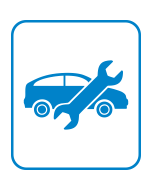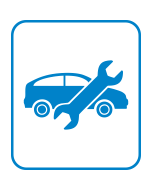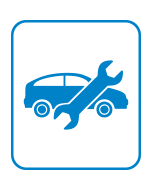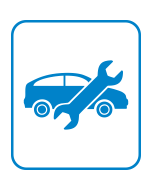Digital Transformation of the Automotive Industry
Digital Transformation of the Automotive Industry
Digitalization Spending to Grow Rapidly to $82.01 Billion in 2020
03-Mar-2017
North America
$10,000.00
Special Price $7,500.00 save 25 %
Description
Research Scope
In 2015, automotive industry investments in key focus areas were about $19.57 billion. Growing digitalization and advancements in technology will increase the investments to $82.01 billion by 2020. The rapid pace of digitalization is transforming the component hardware-driven automotive sector to a software and solutions-focused industry, accelerated by consumers’ evolving digital lifestyle expectations and demands for new and innovative services.
The future roadmap of digitalization in the automotive industry is expected to move rapidly from “digital services” to “car-as-a-service” to “mobility-as-a-service”, transforming the car into an element of a connected living solution by 2030. In the year 2016, digitalization underpins the transformation of business activities, process improvements, and the development of new competencies and business models across five key pillars within the automotive industry.
• Connected Supply Chain
• Industrial Internet of Things and Industry 4.0
• Connected and Autonomous Cars
• Digital Retailing
• Mobility as a Service (MaaS)
The study, Digital Transformation of the Automotive Industry, analyzes the strategies, growth analysis, competitive landscape, business models, and future focus areas of original equipment manufacturers (OEMs) and Tier I suppliers. Digitalization in the automotive industry will have a spiral effect on other industries. OEMs and Tier Is realized that digitization along with IoT, technology partnerships, software capabilities, and customized solutions will be the way forward for the global automotive industry from the year 2016 to 2025.
Growing digitalization initiatives and pilot projects with software-centric focus from automotive OEMs and Tier Is will increase automotive IT spending from $37.9 billion in 2015 to $168.8 billion by 2025 (at a CAGR of 16.1%). More than 1700 new digital startups are expected to disrupt the automotive industry supply chain.
In addition to OEMs, Tier I suppliers, and technology companies initiatives, this study covers a detailed list of startups and technology companies across the five key pillars.
Key Questions this Study will Answer
• What are the key pillars of automotive digitalization? What are the key recommendations to automotive OEMs? Discuss case studies and initiatives from OEMs, Tier Is, technology companies, and startups focusing on digitalization.
• What are the key markets for start-ups to venture into and what is the current revenue potential of those markets?
• Who are the key participants and what are their unique service propositions (USPs)?
• Considering automotive digitalization, how much will the automotive industry spend from technology and software perspective?
• What are the opportunities for digital ecosystem participants (aftermarket, Tier Is, technology companies and OEMs)?
Table of Contents
Executive Summary—Key Findings
The Five Pillars of Digitalization in the Automotive Industry
Four Key Functional Areas Impacted by Digital Transformation
Investment in Digital Transformation in the Auto Industry
New Automotive Digital Ecosystem—Over 1700 new Digital Startups to Disrupt Industry Supply Chain
Snapshot of Major Automakers Investment and M&A Activity
IoT Platform for the Automotive Industry
Automotive OEMs—IoT Platforms
Automotive Digital Retailing—Vision 2020
What Digitizing the Retail Environment Enables
Automotive Industry Digitalization Underpins Aftermarket Evolution
Connected Cars and Autonomous Vehicles—Trends
Connected and Autonomous Cars—Growing Software Dependency
Data Monetization—Direct and Indirect Revenue Opportunities
Product as a Service—Connected Cars
Roadmap Towards Integrated Mobility is Digital
OEMs Moving Towards Car as a Service (CaaS)
Industry 4.0—The Four Functional Facets
Digitalization in Manufacturing—Automotive Industry 4.0 Approach
Conventional (Current ) vs. Digitized (Future) Supply Chain
Recommendations to Automotive OEMs
Research Scope and Objectives
Key Questions this Study will Answer
Research Background
Frost & Sullivan—CES 2017 Interviews
Research Methodology
Frost & Sullivan Digital Transformation Framework
Digital Transformation Framework—Digital Ecosystem
Digital Transformation Framework—Business Models
Digital Transformation Framework—Business Functions
Future of Automotive Retailing is Digital
New Customer Journey is Already Digital
Digital Solutions Supporting Individual Building Blocks
Degree of Digitalization in Car Retailing—2010 to 2020
Future Automotive Retail Ecosystem
Global Automotive Aftermarket eRetailing—Overview
Aftermarket eRetailing Penetration by 2022
Connected Supply Chain—Impact on Service Aftermarket
Digitalization Reshaping Leasing and Vehicle Financing
Gamification Leads to Next Level of User Engagement Models
Exhibit A—Rockar: Leader in Digital Retailing in Europe
Exhibit B—Rockar Hyundai: KPIs
Exhibit C—BMW’s eCommerce Strategy
Exhibit D—eCommerce in Automotive Aftermarket: BMW Web Store
Exhibit E—Mahindra KUV Launch Digital Marketing Highlights
Automotive Companies Unrealized Transportation Opportunities
Industry Drivers—On Demand Mobility Services
Mobility as a Service—Trends
Digital Transformation to Drive Integrated Mobility Platforms and Apps
New Business Models Underpinned by Technology
Mobility as a Service—Services, Business, and Pricing Models
Market Evolution of Vehicle Sharing Technologies
Digitalization Enabling the Shift to Car as a Service
Blockchain and Mobility Solutions
Exhibit F—Daimler Moving Towards Car as a Service
Exhibit G—MaaS Global’s Solutions “The Whim App”
Exhibit H—Technology Enabled Mobility Integration Platform
FordPass Platform—Parking Service to Autonomous Taxi Service
Mobility as a Service Market—2015 vs. 2025
Connected Car—Regional Trends and Highlights
Connected Cars & Technology Startups
Rollout of 5G from 2020 will Accelerate Digitalization of Vehicle
5G and Satellite Communication—Use Cases
Incremental Updates based on Navigation Data Standard (NDS)
Connected Living—The Alphabet Ecosystem
Smartphone Interfacing Technologies
Input HMI Related Trends—Displays and Touch Screens
Input HMI Related Trends—Voice & Handwriting Recognition
Output HMI Related Trends—HUD and Instrument Cluster Display
Key Developments in Voice Recognition
Automotive Industry—Rise of Automation
Natural Language Processing & Machine Learning for Self Driving Cars
Self Driving Technology Trends
Software and Self Learning Cars—2016 to 2025
Self Learning is not Autonomous—It is Beyond
Self Learning Technology—OEM Analysis
True Type Learning Algorithm Based Self Learning Car
Self Learning Revenue Opportunities
Re-thinking Automotive with Big Data
Autonomous Supply Chain—M&A Opportunity for OEMs & Tier Is
Industry 4.0 and the Automotive Industry
Industry 4.0 in Automotive Manufacturing
Big Data—Enhancing the Quest for a Lean Enterprise
Impact of Industry 4.0 on MES Platforms
MES Solutions—Automotive Industry
Future of Automotive Manufacturing
Industrial Robotics—Implications for Automotive Manufacturing
IIoT Driving a New Industrial Revolution Manufacturing
Cyber Security—The New Normal in Production Design
GM Digitalization Initiatives to Reduce Factory Downtime
BMW Approach for Digitalization of Production Facilities
Mercedes-Benz’s Approach to Connected Factory
General Electric—IIoT Platform Seems to be Most Preferred Solution
Future of Automotive Supply Chain—Connected Supply Chain
Automotive Supply Chain Network Architecture
Connected Supply Chain Network Features—2016 vs. 2018
Conventional (Current ) vs. Connected (Future) Auto Supply Chain
Conventional (Current ) vs. Connected (Future) Auto Supply Chain (continued)
Logistics Optimization
Total Supply Chain Management Cost—Potential for 25–50% Reduction
Supply Chain Operations Reference Level-1 Strategic Metrics
Supply Chain Operations Reference Level-1 Strategic Metrics (continued)
Supply Chain Operations Reference Level-1 Strategic Metrics (continued)
Automotive Cash to Cash (C2C) Cycle Time
Connected Supply Chain—Effectiveness and Efficiency
Measuring Connected Supply Chain Success
Automotive OEMs—IoT Platforms
Automotive OEMs Big Data Analytics Initiatives
Automotive OEMs Technology Initiatives
Automotive OEM Mobility Strategies
Digital Transformation Building Blocks—Ford
Business Models—Ford
Ford Mobility Experiments
Volkswagen Digital Lab and Enhanced Digital Platform
General Motors (GM)—Digital Transformation Elements
Future Digitalization of Service Technologies
Key Digital Initiatives by OEMs
Automotive Digital Transformation—Strategic Imperatives
Digital Transformation Solution Accelerators for Automotive Companies
Digitalization and Mobility Companies
Manufacturing—Connected Factory will Transform the Supply Chain
Connected Supply Chain and Enterprise Operations Ecosystem
Key Conclusions
Recommendations to Automotive OEMs
Legal Disclaimer
Product
Operations
People
Information Management
Customer Journey
Leadership
Market Engineering Methodology
| No Index | No |
|---|---|
| Podcast | No |
| Author | Sriram Venkatraman |
| Industries | Automotive |
| WIP Number | K079-01-00-00-00 |
| Is Prebook | No |
| GPS Codes | 9800-A6,9807-A6,9813-A6,9AA5-C1,9AF6-A6,9AF7-A6,9B07-C1 |
 USD
USD GBP
GBP CNY
CNY EUR
EUR INR
INR JPY
JPY MYR
MYR ZAR
ZAR KRW
KRW THB
THB




